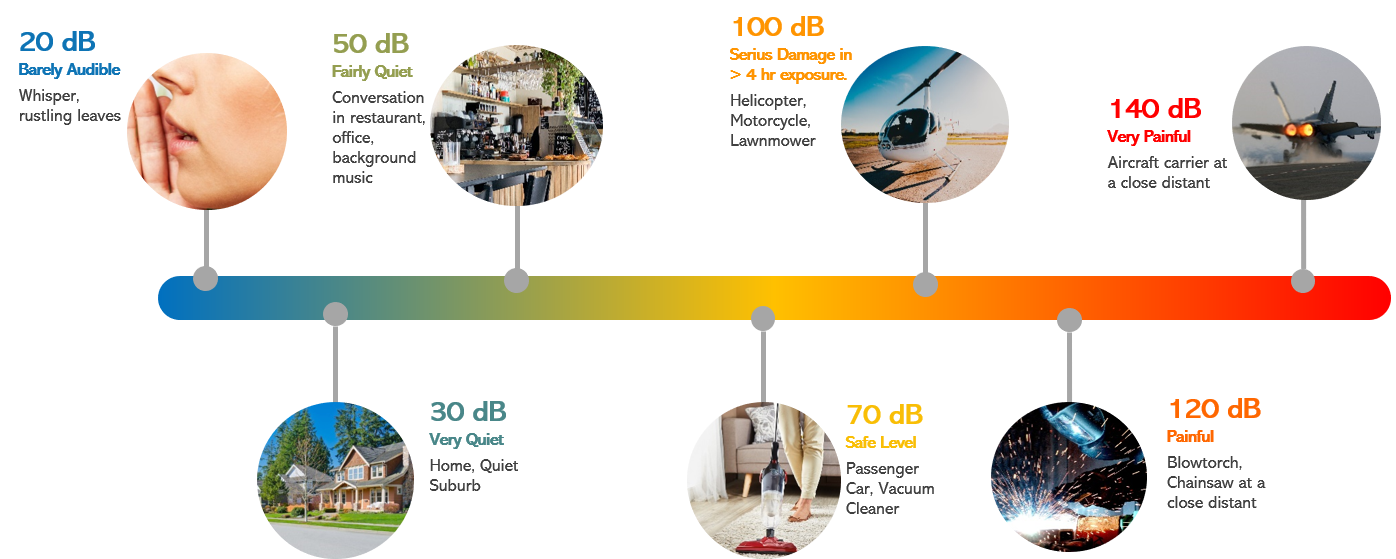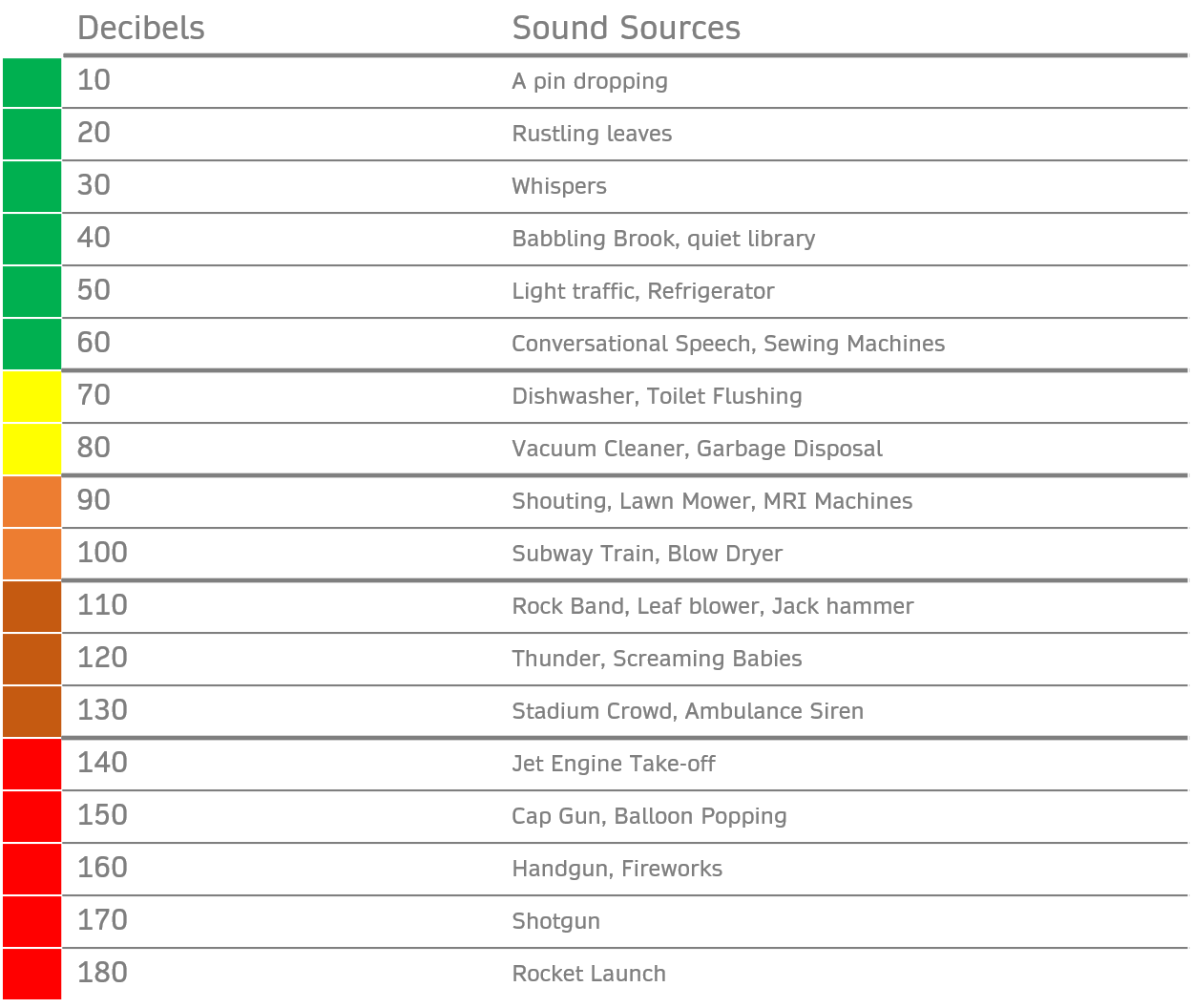
Examples of typical sound levels in dB(A)
Here below are some examples from typical sound levels in dB(A)

 decibel scale examples of sound levels
decibel scale examples of sound levels
How to measure sound?
A decibel meter is an instrument used to measure sound (noise) levels by measuring sound pressure also called SLM (Sound Level Meter), DB meter (Decibel) or if used for occupational noise, a noise dosimeter.
A typical sound level meter uses a microphone to register the sound, it will be processed by the sound level meter and the value (in dB) will be displayed on the meter.
The decibel is far out the most common unit used to measure and display values of sound. Most other values are derivatives or calculated values from the SPL such as Leq (equivalent sound level), Lmax, (maximum sound level), Lmin (minimum sound level), Lpeak (peak level), dB(A) (A-weighted sound level) and many more.
If the sound level meter is to be used to register sound in a classroom, factory, boundary, music event, road noise etc. then typically an equivalent noise value is required, the PLACID meters have these feature standard build in.
PLACID focusses on Class II instruments (IEC61672 or ANSI S1.4) which for most applications is sufficient.
There are many standards that describe how sound should be measured and interpreted, depending on the application and the country you are living in.
Let us know if you have any inquries on how to measure sound!
Soundlevel meter Class 2 tolerances (IEC61672-1:2013)
What is the accuracy for a soundlevel meter Class 2 (also called Type 2) as described in the IEC61672-1 standard ?
In the standard there are 2 classes of soundlevel meters, Class 1 and Class 2 (also called Type 1 and Type 2 soundlevel meters).
Most of the electronics in a soundlevel meter can qualify the specifications for a class 1 sound level meter and most of the times the microphone will determine the class of a soundlevel meter to be Class 1 or Class 2.
There are 2 main differences between Class 1 and Class 2 sound level meters, there is the accuracy which is higher with a Class 1 meter and the frequency range which is wider with a Class 1 meter.
Acoustic engineers and other professionals predominantly will use class 1 meters.
Class 2 meters are mostly used for indicative measurements or occupational noise measurements, noise from entertainment establishments, construction noise and vehicle noise that don’t require the full specs of a Class 1 instrument.
| Frequency accuracy | Class 1 | Class 2 |
|---|---|---|
| 20 Hz | +/- 2.0 dB | +/- 3.0 dB |
| 1000 Hz | +/- 0.7 dB | +/- 1.0 dB |
| 10000 Hz | +2.0 dB / -3.0 dB | +5.0 dB / -∞ dB |
| 20000 Hz | +3.0 dB / -∞ dB | +5.0 dB / -∞dB |
About Placid measurement microphone
In our everyday life, microphones are utilized in all our electronic devices such as PC’s, smart phones, televisions, even in smartwatches. Through this guide, we will explain more about the PLACID microphones that are explicitly designed to be utilized in a complex environment that measures sound: measurement microphones.
MEASUREMENT MICROPHONES
PLACID Instruments BV is a research-oriented high-tech enterprise mainly engaged in the research and development of acoustic measuring equipment, acoustic engineering design, and acoustic vibration technology consulting. The company’s core business is the R & D and manufacture of measurement sensors, test systems, professional recording microphones, professional audio equipment, and acoustic vibration test systems. Nowadays, this method brings values to a various range of measurement microphones for numerous applications from ultra-low to ultra-high sound levels over a very wide array of frequencies.
MEASUREMENT PHYSIC SETUP
Measurement microphones are built on a basic corporal principle: the capacitance microphone. Condenser microphones use two charged metal plates (a diaphragm and backplate) that form a capacitor. When soundwaves hit the mic’s diaphragm, they vibrate within the diaphragm, and the distance between the back plate and diaphragm impacts the voltage called capacitance.

